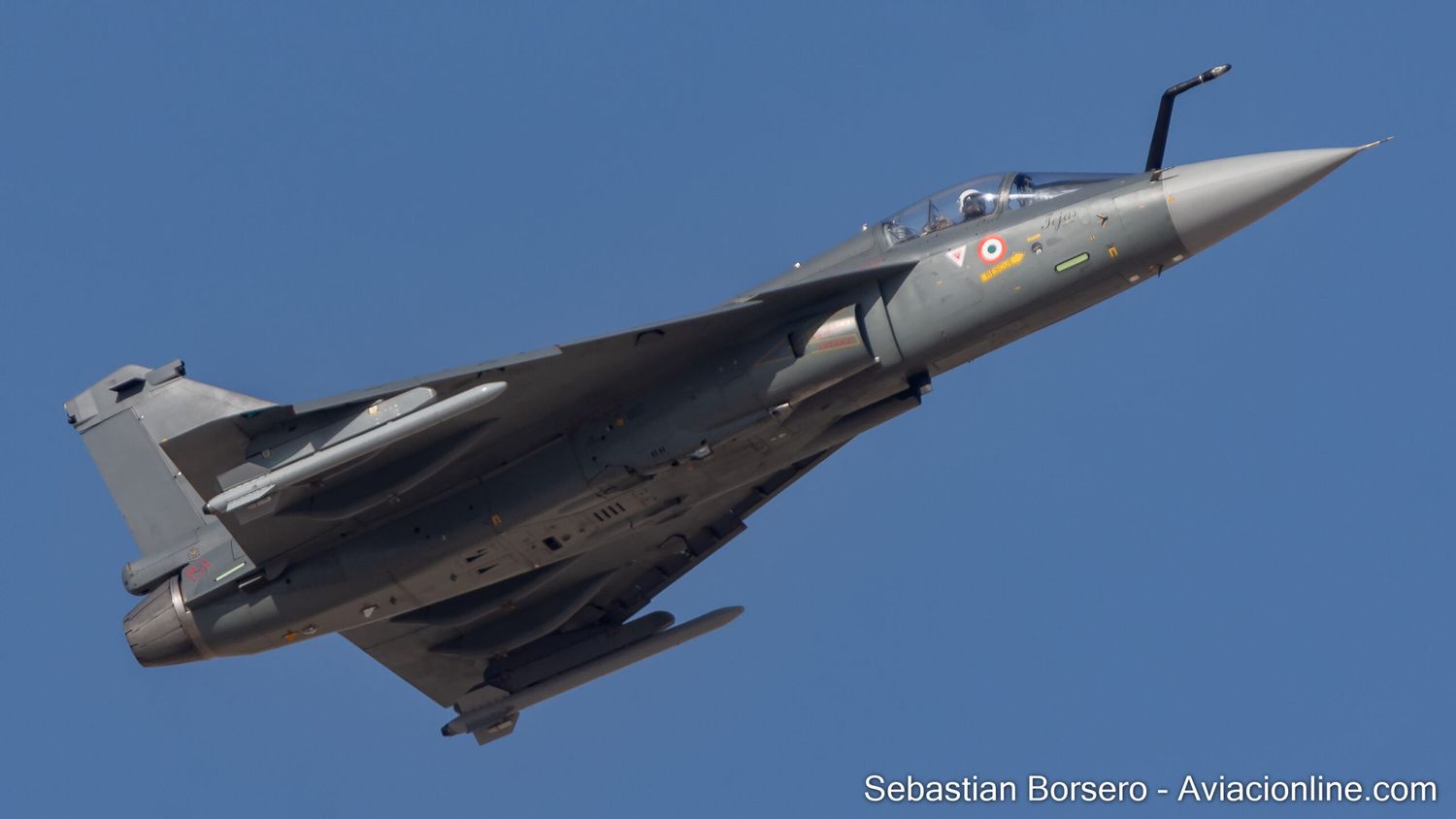A joint statement issued by the Ministries of Foreign Affairs of India and Argentina acknowledged the specific interest in the HAL Tejas to equip the Argentine Air Force (FAA).
The Minister of External Affairs of India (EAM) H.E. Dr. S. Jaishankar, paid an official visit to Argentina from August 25-26, 2022, at the invitation of the Minister of Foreign Affairs, International Trade and Cults, Mr. Santiago Cafiero. Both Ministers jointly chaired an India-Argentina Joint Commission Meeting on August 26, 2022 at the San Martin Palace, Buenos Aires.
Appreciated meeting Defence Minister @JorgeTaiana and Secretary for Strategic Affairs Mercedes Marco del Pont. pic.twitter.com/CypX0uPgqo
— Dr. S. Jaishankar (@DrSJaishankar) August 26, 2022
As a result of these joint commission meetings, which were also attended by the Minister of Defense Jorge Taiana and the Secretary of Strategic Affairs Mercedes Marcó del Pont, it was decided to adopt a common work agenda to strengthen bilateral relations, consisting of 37 points.
In item n°10, within the section on Cooperation in strategic sectors, the specific interest of the Argentine Air Force in the Indian-made light fighter, HAL Tejas, is mentioned.
In his statement, Dr. S. Jaishankar indicated that India has become a significant international supplier of defense equipment, and is interested in this issue being reflected in the cooperation with Argentina.
That is why the exchange of visits between the Armed Forces of the two countries will be promoted and means for the joint production of defense equipment will be explored; with the clear intention of cementing bilateral strategic relations through the supply of Indian defence technology to Argentina.
India is not only making great efforts to achieve increasing degrees of self-sufficiency in equipping its Armed Forces, but is also conducting several promotional campaigns for its military products, and the Tejas is spearheading this endeavor.
See also: HAL started flight testing of the Tejas Mk-1A
India wants to become an exporter of defense equipment, and is intensively seeking a first international customer for its 4.5-generation light fighter. Given India’s support for Argentina to join the BRICS group, the acquisition of a dozen Tejas for the FAA will certainly be on the bilateral cooperation agenda.
India ?? expresó su apoyo para el ingreso argentino a los BRICS.
El canciller Santiago Cafiero y su par indio, Subrahmanyan Jaishankar, coincidieron en que la ampliación del grupo contribuirá a ampliar las voces del mundo en desarrollo. pic.twitter.com/Yn0QaLDfv5
— Cancillería Argentina ?? (@CancilleriaARG) August 26, 2022
Gaucho Tejas
In its Mk-1A version, the degree of locally manufactured components of the Tejas would be around 70%, which is convenient for Argentina, which has to circumvent the military embargo imposed by the United Kingdom.
See also: Korean Aerospace FA-50’s Sale to Argentina Blocked by United Kingdom Component Restriction
But in order for the aircraft to be acquired by the Argentine Air Force, certain components of British origin would still have to be replaced by others of different origin, such as the Martin-Baker ejection seat, the Cobham in-flight refueling probe and the aircraft nose radome. There may also be other minor components, either hardware or software, which could be subject to the British embargo and would have to be replaced.

This is a reality for almost any of the options that the FAA eventually decides on. For example, the Sino/Pakistani JF-17 Block III fighter also has a Martin-Baker ejector seat, which could be swapped for one of Chinese origin.
But a recent article in the U.S. Naval Institute states that the United States is negotiating with the United Kingdom to ease or abandon the embargo and allow the sale of F-16 A/B MLU (ex-Denmark) to Argentina, due to Washington’s concern that relations between Beijing and Buenos Aires may go beyond the strictly economic to the military, with the purchase of the JF-17 Thunder.
If the US cannot convince Argentina to purchase the F-16s decommissioned by Denmark, perhaps it could support the eventual incorporation of the Indian Tejas, which is powered by the American General Electric and convince London not to block components that threaten the transaction. Because if the US is clear about one thing, it is that it does not want any excuse for an eventual Chinese military presence in South America.



Comentarios
Para comentar, debés estar registrado
Por favor, iniciá sesión